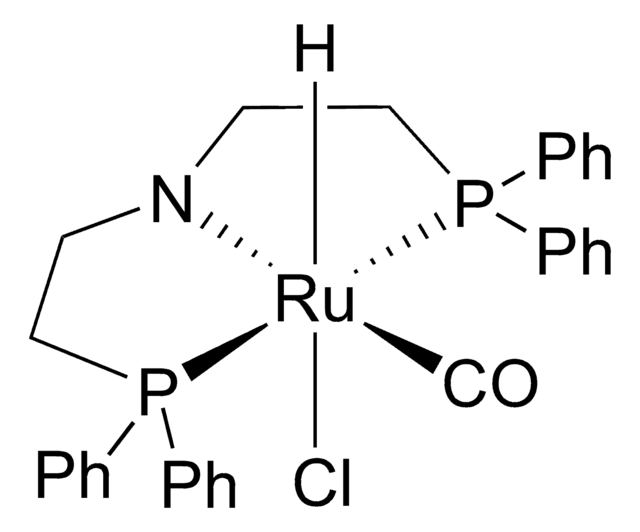701920
2-((Di-tert-butylphosphinomethyl)-6-diethylaminomethyl)pyridine
Synonym(s):
PNN
About This Item
Recommended Products
form
liquid
reaction suitability
reaction type: Buchwald-Hartwig Cross Coupling Reaction
reaction type: Heck Reaction
reaction type: Hiyama Coupling
reaction type: Negishi Coupling
reaction type: Sonogashira Coupling
reaction type: Stille Coupling
reaction type: Suzuki-Miyaura Coupling
reagent type: ligand
refractive index
n20/D 1.519
density
0.936 g/mL at 25 °C
functional group
phosphine
SMILES string
CCN(CC)Cc1cccc(CP(C(C)(C)C)C(C)(C)C)n1
InChI
1S/C19H35N2P/c1-9-21(10-2)14-16-12-11-13-17(20-16)15-22(18(3,4)5)19(6,7)8/h11-13H,9-10,14-15H2,1-8H3
InChI key
MTBWGMDPQBSPGF-UHFFFAOYSA-N
Signal Word
Warning
Hazard Statements
Precautionary Statements
Hazard Classifications
Aquatic Chronic 4 - Eye Irrit. 2 - Skin Irrit. 2 - STOT SE 3 - Water-react 3
Target Organs
Respiratory system
Storage Class Code
4.3 - Hazardous materials which set free flammable gases upon contact with water
WGK
WGK 3
Flash Point(F)
154.0 °F
Flash Point(C)
67.8 °C
Personal Protective Equipment
Certificates of Analysis (COA)
Search for Certificates of Analysis (COA) by entering the products Lot/Batch Number. Lot and Batch Numbers can be found on a product’s label following the words ‘Lot’ or ‘Batch’.
Already Own This Product?
Find documentation for the products that you have recently purchased in the Document Library.
Our team of scientists has experience in all areas of research including Life Science, Material Science, Chemical Synthesis, Chromatography, Analytical and many others.
Contact Technical Service










